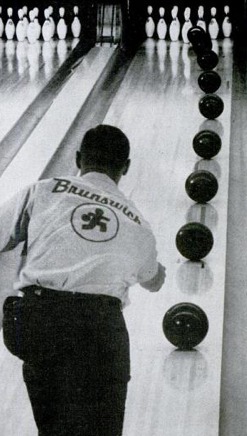The bowling ball is the most personalized part of
the game. When buying a ball you have to decide on
what brand to buy, what weight best suits you, how
you want the ball to be drilled for your fingers,
and much more. To break it down in simple terms, no
matter what brand you buy you must consider the
physic behind the options. Friction, mass, and
rotation are the main physics aspects behind the
ball you choose.
The friction is determined by what type of Coverstock your ball has. This is the part of the ball that makes contact with the lanes. "Bowling balls are made of four main different types of Coverstocks- Plastic, Urethane, Reactive Resign, and Particle", as stated by Bowlers Advantage Pro Shops. Friction increases steadily from Plastic to Particle. With increased friction, the ability for a ball to hook increases. This hook potential occurs when a ball is thrown at an angle (the holes are facing a side instead of being straight up and down), causing the surface of the ball to grip the lanes and move in a curving fashion. The core
is the part of the ball that deals with the mass
of the ball, and the rotation potential. There
are two main types of cores for a bowling ball,
a high mass and a low mass. The high mass sits
close to the surface, reducing rotation and
causing the ball to have a straighter path. This
is best for beginners because it is easy to
predict the path the ball will take. For someone
wanting more action and increased strike
potential a low mass is best. Since the mass is
close to the center of the bowing ball (reducing
the radius), it takes a smaller moment of
inertia to get the ball rolling. The Moment of
Inertia for a sphere is (2/5)mass*radius^2. You
use this to find the torque (aka what I've been
calling rolling potential) since torque=Moment
of Inertia*angular momentum. The reduction of
the Moment of Inertia increases the rolling
potential of a ball, making its curve really
intense. This provides a better shot at the
"sweet spot" on the pin formation.


High Mass bowling
ball
Low Mass bowling
ball
A Curved Ball
Image by Columbia Bowling, Blueprint Bowling Image by Art of Manliness |
|
|